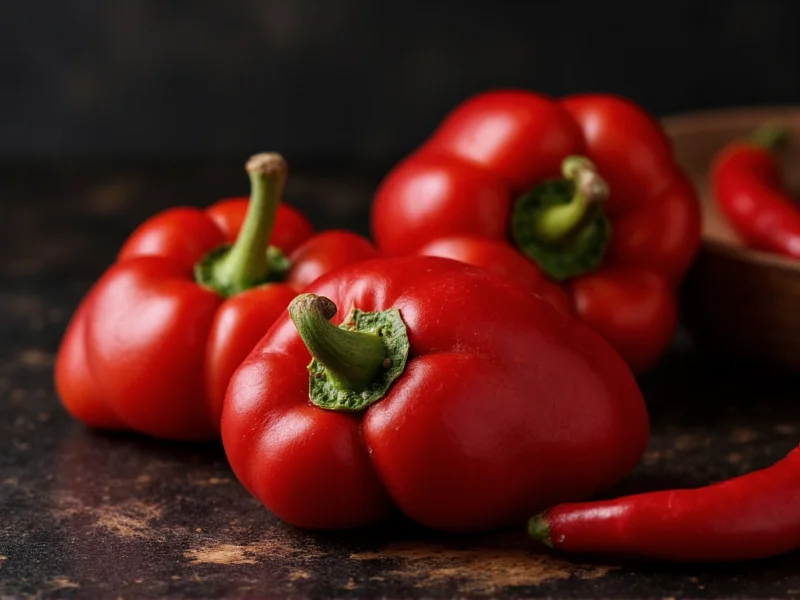Understanding what is the ghost pepper requires examining its scientific classification, heat measurement, and distinctive characteristics. This Capsicum chinense variety, scientifically known as Capsicum chinense 'Bhut Jolokia,' represents one of nature's most intense culinary experiences. The name “ghost pepper” derives from the Hindi word “bhut,” meaning ghost, suggesting its heat sneaks up on you like a phantom.
Scientific Classification and Origin
Contrary to popular belief that ghost peppers are exclusively from India, they actually grow across Northeast India, Bangladesh, and parts of China. The Assam region of India claims the most authentic ghost peppers, where locals have cultivated them for centuries. Scientific verification in 2005 by researchers at New Mexico State University's Chile Pepper Institute confirmed its extraordinary heat level, leading to its Guinness World Record recognition.
Measuring Ghost Pepper Heat: Scoville Scale Explained
When exploring what is the ghost pepper's heat level, the Scoville scale provides crucial context. Developed by Wilbur Scoville in 1912, this measurement quantifies capsaicin concentration—the compound responsible for chili heat. Ghost peppers register between 855,000 and 1,041,427 SHU, making them approximately 200–400 times hotter than a jalapeño (2,500–8,000 SHU).
| Pepper Variety | Scoville Heat Units | Heat Comparison |
|---|---|---|
| Ghost Pepper | 855,000–1,041,427 SHU | 200–400x jalapeño |
| Carolina Reaper | 1,400,000–2,200,000 SHU | 2–3x ghost pepper |
| Habanero | 100,000–350,000 SHU | 1–3x ghost pepper |
| Jalapeño | 2,500–8,000 SHU | Baseline |
Physical Characteristics and Identification
Ghost peppers typically measure 2.4–2.8 inches long with a distinctive wrinkled, bumpy texture. They mature from green to vibrant red, though yellow, chocolate, and purple varieties also exist. The irregular shape—often resembling a scrunched-up heart—helps distinguish them from smoother-skinned habaneros. When evaluating what is the ghost pepper visually, note its tapering tail and uneven surface, which indicate higher capsaicin concentration in the placental tissue.
Ghost Pepper Cultivation Requirements
Growing ghost peppers requires specific conditions that mimic their native subtropical climate. These plants need 100–120 days of frost-free weather, consistent temperatures between 70–90°F (21–32°C), and high humidity. Gardeners attempting to cultivate ghost peppers should note they're more challenging to grow than common varieties like jalapeños. Successful ghost pepper cultivation depends on well-draining soil with pH 6.0–6.8 and protection from extreme temperature fluctuations.
Culinary Applications and Safety Considerations
Professional chefs use ghost peppers sparingly in sauces, marinades, and specialty dishes where extreme heat is desired. When handling ghost peppers, always wear nitrile gloves and avoid touching your face. The capsaicin oil can cause severe irritation to eyes and sensitive skin. Never consume ghost peppers raw without proper preparation—even experienced eaters risk adverse reactions. For those exploring what is the ghost pepper's effect on the body, expect immediate burning sensation, sweating, and potentially nausea if consumed in excess.
Ghost Pepper vs Carolina Reaper: Understanding the Difference
Many confuse ghost peppers with Carolina Reapers, but significant differences exist. While ghost peppers held the world record until 2011, the Carolina Reaper now claims the title with average heat exceeding 1.5 million SHU. The Reaper features a distinctive stinger-shaped tail and smoother skin compared to the ghost pepper's wrinkled appearance. Understanding what is the ghost pepper's place in the heat hierarchy helps consumers make informed choices about their spice tolerance.
Historical Significance and Cultural Uses
In Northeast Indian culture, ghost peppers served practical purposes beyond cuisine. Villagers traditionally mixed powdered ghost peppers with smoke to deter elephants from crops. Some communities used them medicinally for digestive issues and as natural preservatives. The pepper's legendary status grew when Indian military researchers developed ghost pepper grenades as non-lethal weapons. This historical context enriches our understanding of what is the ghost pepper beyond mere culinary curiosity.
Ghost Pepper Safety and Consumption Guidelines
Consuming ghost peppers requires caution. Start with minuscule amounts—a single seed contains enough capsaicin to overwhelm most palates. Dairy products like milk or yogurt provide the best relief from capsaicin burn, as casein breaks down the oil. Never use water, which spreads the oil rather than neutralizing it. Individuals with gastrointestinal conditions should avoid ghost peppers entirely. When exploring what is the ghost pepper's impact on health, moderate consumption may offer benefits like metabolism boost and pain relief, but excessive intake risks severe discomfort.
How hot is a ghost pepper compared to common peppers?
Ghost peppers measure 855,000–1,041,427 Scoville Heat Units, making them approximately 200–400 times hotter than jalapeños and 6–12 times hotter than habaneros. One ghost pepper equals about 27 regular habaneros in heat intensity.
Can eating a ghost pepper be dangerous?
While not lethal in normal culinary amounts, consuming ghost peppers can cause severe discomfort including nausea, vomiting, and temporary breathing difficulties. Cases of gastric rupture have been reported from excessive consumption. Always consume with caution and have dairy products available for relief.
How should I handle ghost peppers safely?
Always wear nitrile gloves when handling ghost peppers, never latex (capsaicin penetrates latex). Work in a well-ventilated area, avoid touching your face, and wash all surfaces and tools thoroughly afterward. Consider using eye protection as airborne capsaicin can cause irritation.
What's the difference between ghost pepper and Bhut Jolokia?
There is no difference—Bhut Jolokia is the original Assamese name meaning “ghost chili.” The terms are used interchangeably, though some producers use “ghost pepper” for marketing purposes while “Bhut Jolokia” denotes authenticity.
How long do ghost pepper plants take to mature?
Ghost pepper plants require 100–120 days from transplanting to reach full maturity. They need consistent warmth (70–90°F), high humidity, and well-draining soil. The peppers change from green to vibrant red when fully ripe, typically 30–45 days after flowering.











 浙公网安备
33010002000092号
浙公网安备
33010002000092号 浙B2-20120091-4
浙B2-20120091-4